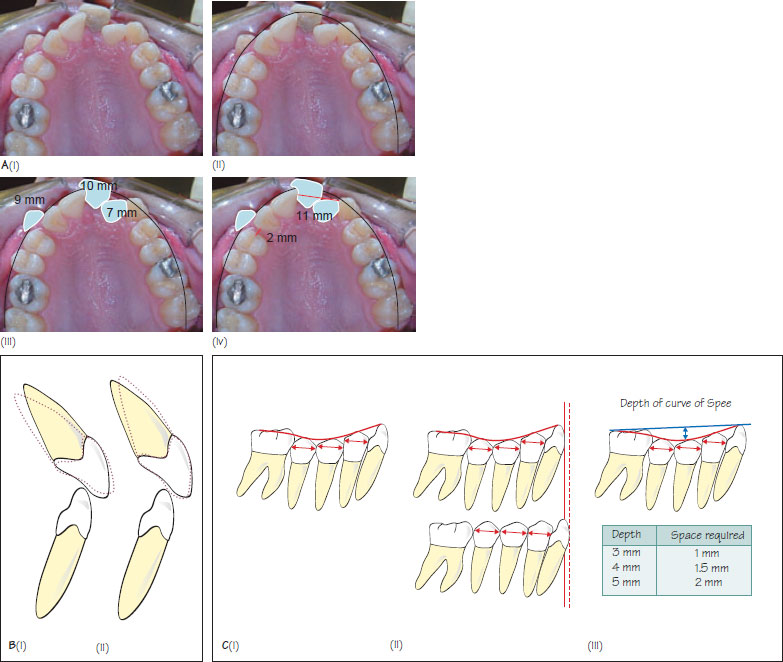18
Space analysis
Table 18.1 A space analysis form can be used to tabulate all the information collected. A + sign is used for space gained and − sign for space required.
| Lower arch | Upper arch | |
| space required | ||
| Crowding / spacing | ………………mm | ………………mm |
| 1 ncieor AP movement | ……………..mm | ……………..mm |
| Inclination change | ……………..mm | ………………mm |
| Levelling of curve of Spee | ……………..mm | ………………mm |
| Arch expansion | ……………..mm | ………………mm |
| Tooth enlargement / replacement | ……………..mm | …………mm |
| Total | ……………..mm | . …………….mm |
| space creation | ||
| Molar distalisation | +……………..mm | +…………….mm |
| Enamel reduction | +……………..mm | +…………….mm |
| Extractions | +……………..mm | +……………..mm |
| Total | ……………..mm | ……………..mm |
| Residue | …………….mm | ……………..mm |
Figure 18.1 (A) The assessment of dental crowding, (i) Pre treatment view of upper arch, (ii) an archform is constructed that fits the majority of teeth, (iii) the mesiodistal width of the crowded teeth is measured (9 + 10 + 7 = 26 mm), and (iV) the space available for alignment is measured (2 + 11 = 13 mm). The total arch crowding can then be calculated (26 −13 = 13 mm). (B) Changes in incisor inclination affect space requirements, (i) Incisor proclination leads to an increase in overjet, and (ii) incisor retroclination can lead to a slight reduction in overjet. (C) (i) The curve of 5pee consists of a series of slipped contact points in the vertical plane, (ii) Levelling of the curve of 5pee involves aligning the contact points and requires space, (iii) the space required to level the curve of 5pee is dependent on the depth of the curve.

The aim of space analysis is to determine the space and anchorage requirements for orthodontic treatment. The Royal London space analysis provides a comprehensive approach to spa/>
Stay updated, free dental videos. Join our Telegram channel

VIDEdental - Online dental courses


